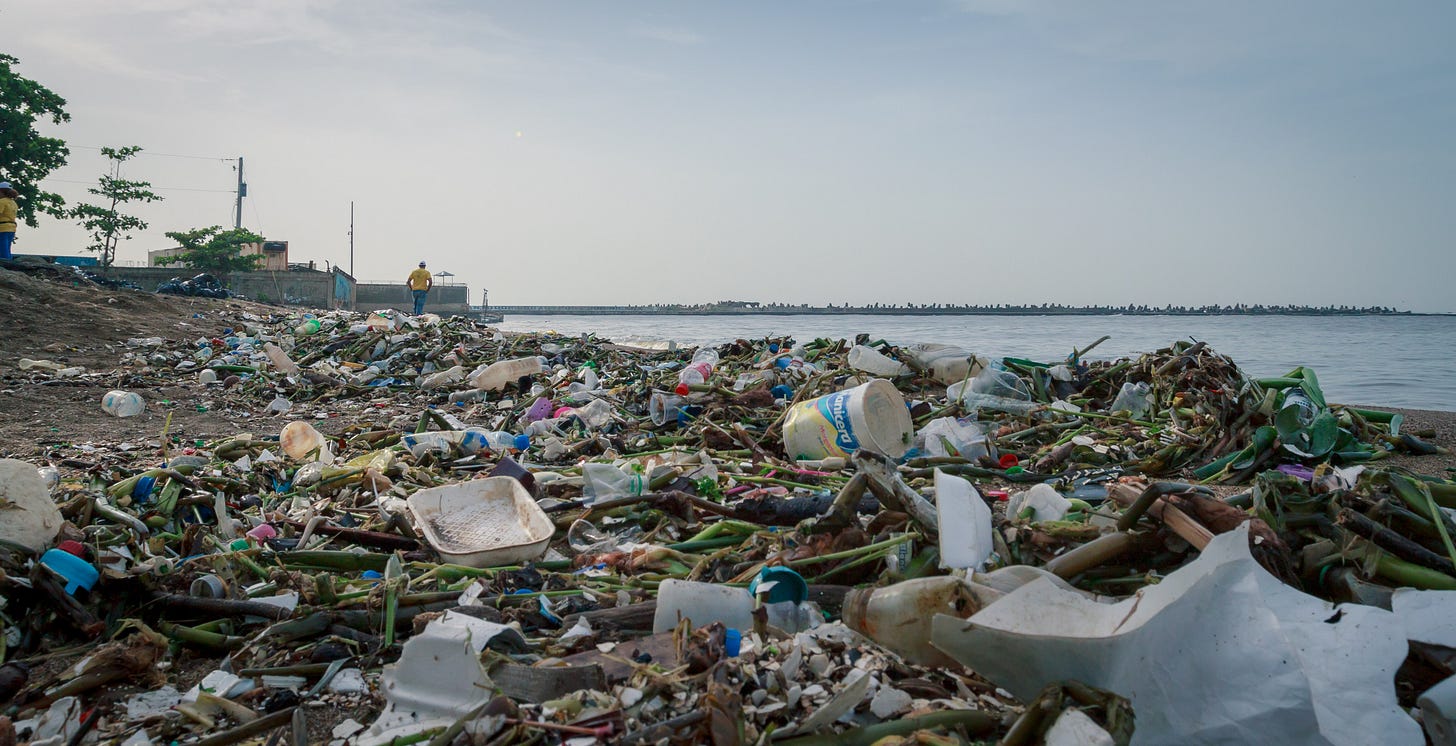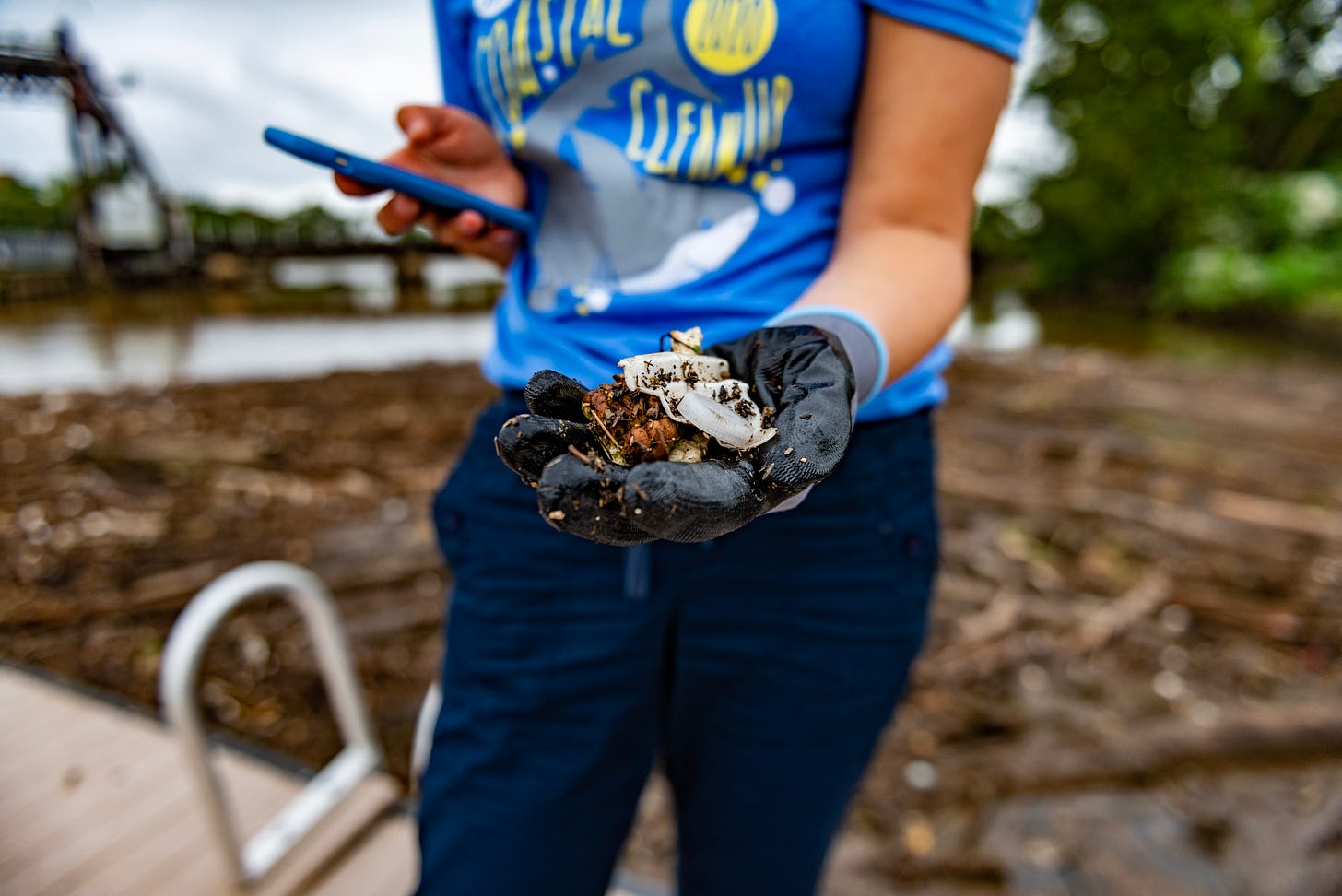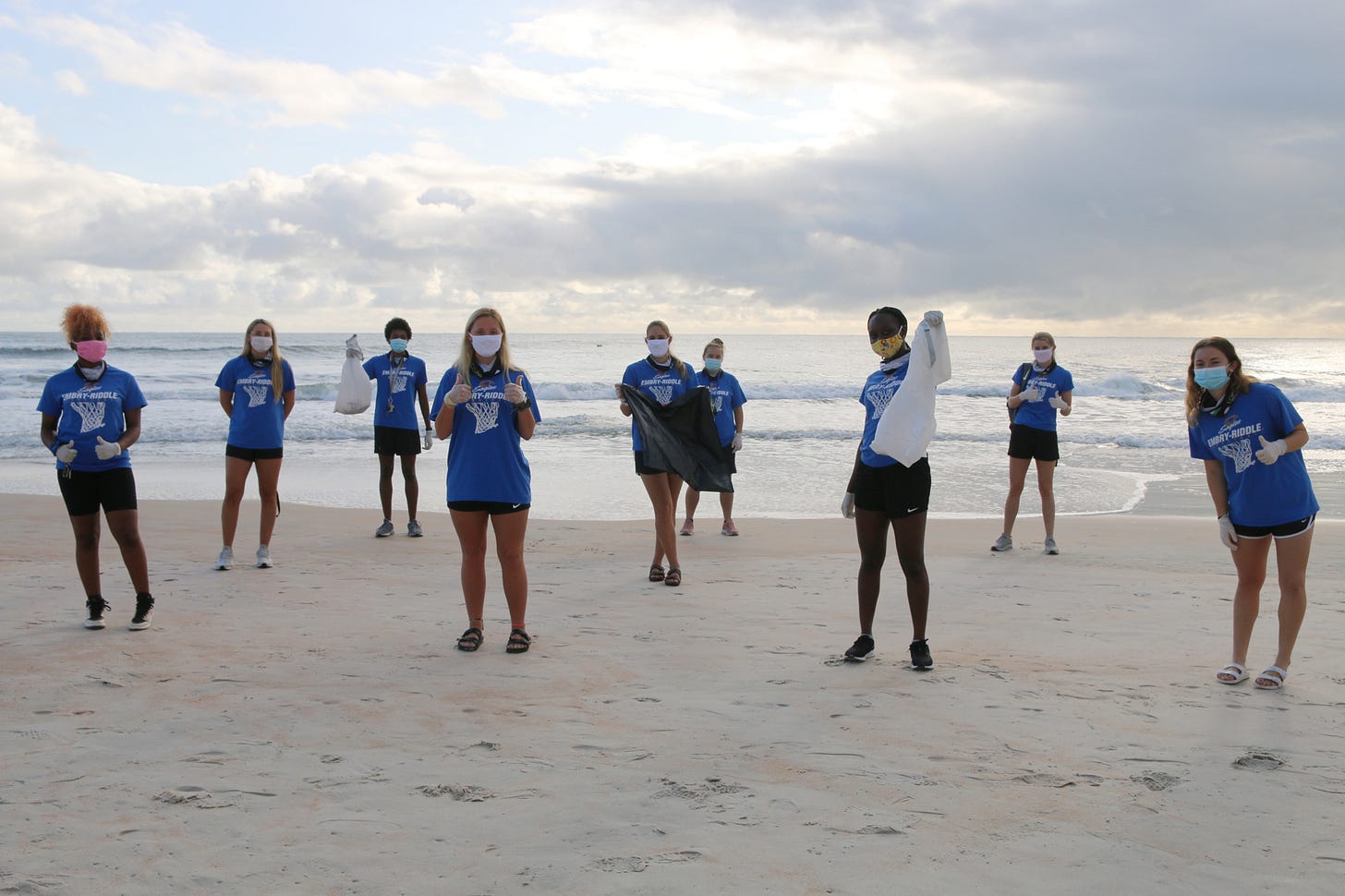The food system is driving ocean plastic pollution
We're going to need more than trash-collecting volunteers to clean it up.
According to new data released this week, packaging from food and beverages—including bottles, wrappers, grocery bags, and takeout containers—accounts for the vast majority of waste that litters beaches and waterways and eventually makes its way into the world’s oceans.
“I would say that's typical,” said Sarah Kollar, the Project and Outreach Manager of the Ocean Conservancy’s International Coastal Cleanup (ICC), which has been cleaning up and cataloguing ocean-bound trash for 35 years. “It’s not a big surprise to us at all that those items top the list.”
And while over the course of four decades the composition and sources of trash has changed in various ways, the report points to one steady trend that has stood out above all others: the rise of plastics. One 2016 analysis estimates that 11 million metric tons of plastic pollution enters the ocean annually.
Larger plastic trash can harm coastal communities and cause entanglements with animals in the ocean, but it also breaks down into smaller and smaller pieces over time, and researchers are just beginning to illuminate what the impacts of that pollution might be over the long-term. “Once they get really, really small and become microplastics, it's nearly impossible to clean them up,” Kollar said. “The concern there is: What does that mean for marine life?”
Microplastics have been found in over 100 aquatic species and are widespread, detected even in the depths of the Mariana Trench. Humans are also ingesting them, and research published last year detected them in a human placenta for the first time. At this point, the effects are unknown.
Given the scale of the issue, I talked to Kollar about what the 2020 ICC found in terms of the food system’s contributions to plastic pollution and some of the solutions the Ocean Conservancy is working on.
Unwrapped
The ICC started on the Texas coast in 1985 and has grown to include volunteers cleaning up trash that would end up in the ocean in more than 30 US states and dozens of countries around the world. As volunteers collect trash, they track each item, and that data is compiled into the world’s largest database of marine debris.
This 2021 report reflects the results of the 2020 clean-up. Because the effort was smaller than usual due to COVID-19 disruptions, comparing the tons of trash collected to past years isn’t possible, but other takeaways are clear.
Three categories of food packaging—wrappers, grocery bags, and takeout containers—made the list of the top ten items collected. Five categories—plastic bottles, plastic bottle caps, straws, cans, and glass bottles—were beverage related. Items made of plastic dominated over all.
Of course, this clean-up took place in the midst of the COVID-19 pandemic, during which several factors led to the use of more packaging and more plastic. Shuttered restaurants were forced to switch to takeout and delivery only and were (and still are!) struggling to survive; many did not have the resources to switch to more expensive recyclable or compostable packaging. People bought groceries online, and many businesses stopped allowing the use of reusable coffee cups and grocery bags due to fears of germ swapping. (I still haven’t figured out if the coffee shops around me are willing to use my reusable cup and often feel bad asking in case it makes an employee uncomfortable, even though we now know surface transmission is not a major factor in spreading the virus.)
Because fewer people were able to come out and participate in 2020, Kollar said the data was unclear on whether there were major upticks in pollution from items like takeout containers. Plus, the pandemic drags on and its impacts are still unfolding. “I think when we'll really see the impact is in the next couple of years, because there's a little bit of a lag,” she said.
In the meantime, what can the report tell us about solutions?
In some countries, Kollar said things as fundamental as waste infrastructure are lacking. For example, “we talked to some of our partners that do clean up in Indonesia, and they struggle with...‘we don't know if the trash can even get to a safe and contained landfill,’” she explained.
In the US, there are many factors, starting with fixing recycling. According to the report, of the millions of commonly collected items in this country over the span of the 35 years, 69 percent were not recyclable, and nearly half of those were food- and beverage-related. “We're doing our best to work with companies, and we really believe in passing legislation that can mandate that plastic producers have more recycled content in their materials and make their materials more recyclable in general,” she said. Federal legislators introduced the Break Free From Plastic Pollution Act of 2021 in March.
Of course, reducing and reusing is even better than recycling, and despite COVID-19’s potential impacts, there is still lots of innovation happening when it comes to getting rid of food- and beverage-related single-use plastics.
At the end of September, The Reusies will honor companies, nonprofits, and activists working on some of those solutions at an awards show specifically for reusables. Nominees include Stojo, which makes brilliantly designed food boxes and beverage bottles that collapse so they can be easily thrown in a bag and Just Salad, which has pioneered a model for BYOB (bring your own bowl) fast casual takeout.
“Our hope is that down the road we can reduce the plastic that we're producing and get rid of those unnecessary single-use plastics as much as possible,” Kollar said, “and really work on circularity everywhere.”
Wrapped up, to go
*Packaging from food and beverages—including bottles, wrappers, grocery bags, and takeout containers—accounts for the vast majority of waste that litters beaches and waterways and eventually makes its way into the world’s oceans.
*Ocean pollution is increasingly made up of single-use plastics, many of which are food and beverage containers.
*Plastics break down into microplastics in the ocean and cannot be cleaned up, potentially impacting marine life, ecosystems, and human health.
A side of policy
Plastic isn’t the only thing getting into waterways… Last week, the EPA announced it will update national water pollution standards for meat and poultry processing plants, many of which regularly discharge slaughterhouse waste that affects local communities and aquatic ecosystems. The update is the result of a lawsuit brought by environmental groups. My colleague Greta Moran has the whole story on Civil Eats.
Actually eating
I took a little trip and ate delicious whole wheat pizzas made by chef Pam Yung as part of the Chef in Residence program at Stone Barns, but apparently I was having so much fun I failed to keep track of any of the dishes or take any pictures. Instead, here’s a picture of my dog looking absolutely ridiculous in a life jacket—because life is hard and photos of goofy dogs can also nourish you.
Let’s be friends
Follow me on Twitter and Instagram to continue the conversation. See you next week!







